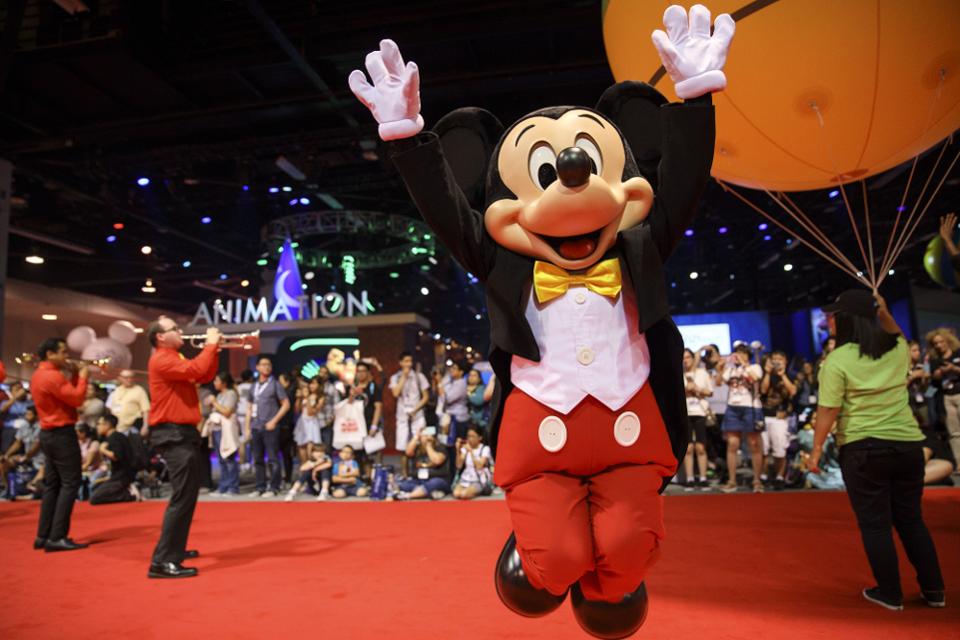Five Key Questions In The Wake Of Disney’s OTT Leap

Mickey Mouse jumps during an indoor parade at the D23 Expo 2017 in Anaheim, California, U.S., on Friday, July 14, 2017. Photographer: Patrick T. Fallon/Bloomberg
The Walt Disney Company announced a series of major moves yesterday that its CEO Robert A. Iger characterized as “an extremely important, very, very significant strategic shift.” In short order, Disney announced that it was moving from a minority to a majority ownership stake in BamTech (the tech side of MLB Advanced Media, and a major infrastructure engine for the over-the-top video business); that it was withdrawing its entire television and motion picture library from Netflix; and that it would be launching not one but two OTT streaming services, an entertainment-focused one with Disney and Pixar content and another for sports enthusiasts under the ESPN banner.
Larry David might well agree with Iger that this is pretty, pretty, pretty, big news. But the magnitude of what this will mean will take some time to manifest itself. In the meantime, the Disney moves leave us all with many more questions than answers about what the future of television and the media landscape will look like.
Will others follow suit?
With moves such as these the inclination is to see this as the first of an inevitable set of traditional media dominoes that will fall. But I wouldn’t rush to judgment on this. Disney has always been the most unique major media company in a field of unique companies. The company’s foundation is still based upon a globally-recognized, iconic theme park business (whose operating income grew 18% in the last year). Disney might be the only motion picture brand name that really matters for consumers, especially young ones. And ESPN, despite numerous challenges in its business (mostly related to massive sports rights fees), is still one of the handful of most recognized brands in the television business. Disney likely has an ability to “go it alone” in a way that few if any media companies or brands could match. I mean, how many kids are crying out for Columbia Pictures content?
Does this mean the end of multichannel video?
Again, from the Twittersphere, we see the end…

Comments